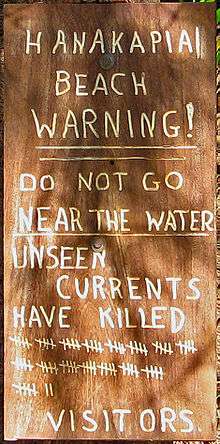Tally marks


Tally marks, also called hash marks, are a unary numeral system. They are a form of numeral used for counting. They are most useful in counting or tallying ongoing results, such as the score in a game or sport, as no intermediate results need to be erased or discarded.
However, because of the length of large numbers, tallies are not commonly used for static text. Notched sticks, known as tally sticks, were also historically used for this purpose.
Early history
Counting aids other than body parts appear in the Upper Paleolithic. The oldest tally sticks date to between 35,000 and 25,000 years ago, in the form of notched bones found in the context of the European Aurignacian to Gravettian and in Africa's Late Stone Age.
The so-called Wolf bone is a prehistoric artifact discovered in 1937 in Czechoslovakia during excavations at Vestonice, Moravia, led by Karl Absolon. Dated to the Aurignacian, approximately 30,000 years ago, the bone is marked with 55 marks which may be tally marks. The head of an ivory Venus figurine was excavated close to the bone.[1]
The Ishango bone, found in the Ishango region of the present-day Democratic Republic of Congo, is dated to over 20,000 years old. Upon discovery, it was thought to portray a series of prime numbers. In the book How Mathematics Happened: The First 50,000 Years, Peter Rudman argues that the development of the concept of prime numbers could only have come about after the concept of division, which he dates to after 10,000 BC, with prime numbers probably not being understood until about 500 BC. He also writes that "no attempt has been made to explain why a tally of something should exhibit multiples of two, prime numbers between 10 and 20, and some numbers that are almost multiples of 10."[2] Alexander Marshack examined the Ishango bone microscopically, and concluded that it may represent a six-month lunar calendar.[3]
Clustering

Tally marks are typically clustered in groups of five for legibility. The cluster size 5 has the advantages of (a) easy conversion into decimal for higher arithmetic operations and (b) avoiding error, as humans can far more easily correctly identify a cluster of 5 than one of 10.
 Tally marks used in most of Europe, Turkey, Zimbabwe, Australia, New Zealand and North America.
Tally marks used in most of Europe, Turkey, Zimbabwe, Australia, New Zealand and North America.
In some variants, the diagonal/horizontal slash is used on its own when five or more units are added at once. Cultures using Chinese characters tally by forming the character 正, which consists of five strokes.[4][5]
Cultures using Chinese characters tally by forming the character 正, which consists of five strokes.[4][5]
 In the dot and line (or dot-dash) tally, dots represent counts from 1 to 4, lines 5 to 8, and diagonal lines 9 and 10. This method is commonly used in forestry and related fields.[6]
In the dot and line (or dot-dash) tally, dots represent counts from 1 to 4, lines 5 to 8, and diagonal lines 9 and 10. This method is commonly used in forestry and related fields.[6] Brahmi numerals (lower row) in India in the 1st century CE
Brahmi numerals (lower row) in India in the 1st century CE
Writing systems
Roman numerals, the Chinese numerals for one through three (一 二 三), and rod numerals were derived from tally marks, as possibly was the ogham script.
See also
- History of writing ancient numbers
- Abacus
- Australian Aboriginal enumeration
- Carpenters marks
- Cherty i rezy
- Chuvash numerals
- Counting rods
- Finger counting
- Hangman (game)
- History of communication
- History of mathematics
- Lebombo bone
- List of international common standards
- Paleolithic tally sticks
- Prehistoric numerals
- Quipu
- Roman numerals
- Tally stick
References
| Wikimedia Commons has media related to Unary numeral. |
- ↑
- Graham Flegg, Numbers: their history and meaning, Courier Dover Publications, 2002 ISBN 978-0-486-42165-0, pp. 41-42.
- ↑ Rudman, Peter Strom (2007). How Mathematics Happened: The First 50,000 Years. Prometheus Books. p. 64. ISBN 978-1-59102-477-4.
- ↑ Marshack, Alexander (1991): The Roots of Civilization, Colonial Hill, Mount Kisco, NY.
- ↑ Hsieh, Hui-Kuang (1981) "Chinese tally mark", The American Statistician, 35 (3), p. 174, doi:10.2307/2683999
- ↑ Ken Lunde, Daisuke Miura, L2/16-046: Proposal to encode five ideographic tally marks, 2016
- ↑ Schenck, Carl A. (1898) Forest mensuration. The University Press. (Note: The linked reference appears to actually be "Bulletin of the Ohio Agricultural Experiment Station", Number 302, August 1916)